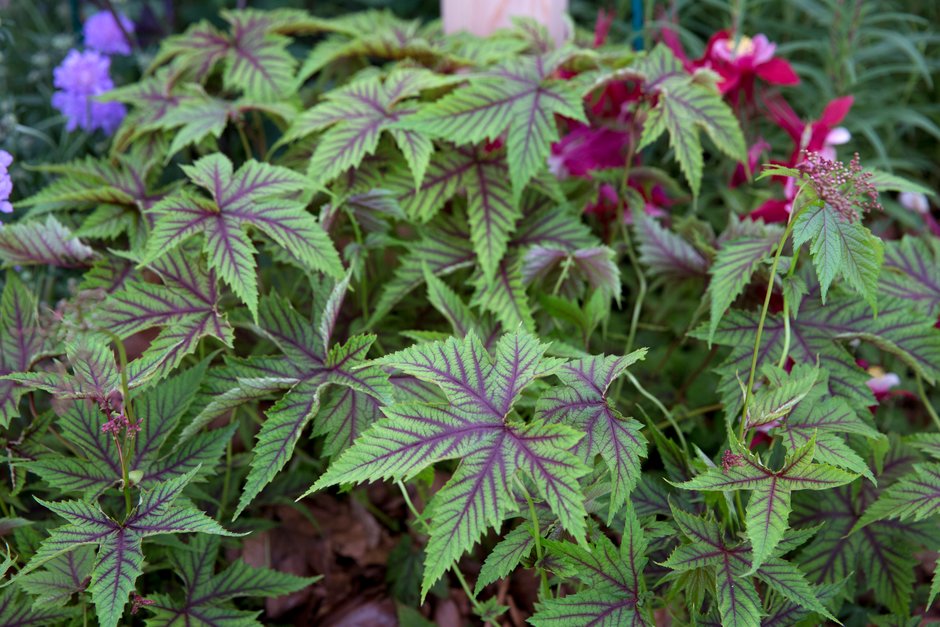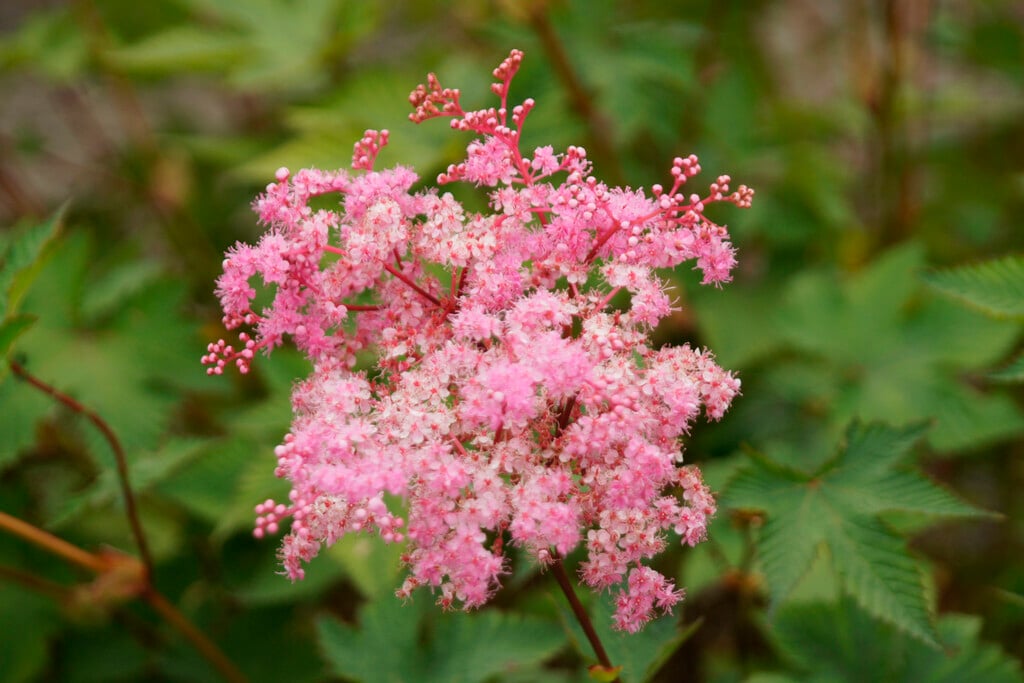Filipendula multijuga
pinnate meadowsweet
A clump-forming perennial to 60cm tall with erect stems bearing lobed leaves at the tip and opposite pairs of basal toothed leaflets. Loose clusters of small, rose pink flowers are borne above the foliage in summer
Synonyms
Filipendula digitata 'Nana'Filipendula palmata 'Nana'
see moreFilipendula palmata 'Digitata Nana'
Size
Ultimate height
0.5–1 metresTime to ultimate height
2–5 yearsUltimate spread
0.1–0.5 metresGrowing conditions
Moisture
Moist but well–drained, Poorly–drainedpH
Acid, Alkaline, NeutralColour & scent
| Stem | Flower | Foliage | Fruit | |
| Spring | Green | |||
|---|---|---|---|---|
| Summer | Pink | Green | ||
| Autumn | Green | |||
| Winter |
Position
- Full sun
- Partial shade
Aspect
South–facing or North–facing or West–facing or East–facing
Exposure
Exposed or Sheltered Hardiness
H6Botanical details
- Family
- Rosaceae
- Native to GB / Ireland
- No
- Foliage
- Deciduous
- Habit
- Bushy
- Genus
Filipendula are rhizomatous herbaceous perennials with pinnately divided leaves and large sprays of small rosy-pink or white flowers borne on leafy stems well above the foliage
- Name status
Correct
How to grow
Cultivation
Grow in fertile, humus-rich, moist soil in full sun or partial shade
Propagation
Propagate by seed or by division
Suggested planting locations and garden types
- Cottage and informal garden
- Low Maintenance
- Flower borders and beds
Pruning
Cut back after flowering
Pests
Generally pest-free
Diseases
May be susceptible to fungal leaf spots; mildew may also be a problem
Love gardening
Sign up to receive regular gardening tips, inspiration, offers and more
View our Privacy Policy
Get involved
The Royal Horticultural Society is the UK’s leading gardening charity. We aim to enrich everyone’s life through plants, and make the UK a greener and more beautiful place.

